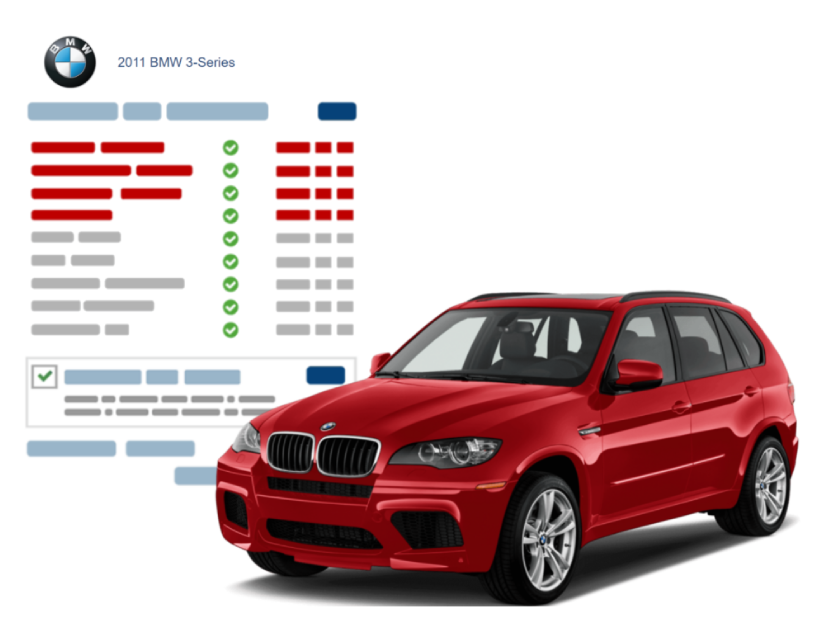
Buying a used car is a decision that is preceded by emotions, calculations, and… a lot of questions. Was the car accident-free? Has the odometer been tampered with? Or does it have a long history of repairs and accidents? To find answers, we are increasingly turning to vehicle history reports, but few people consider where this information actually comes from.
It turns out that the history of a car begins long before the first owner takes it on the road.
1. Registration – the official start of a car’s life
It all starts at the office. After leaving the factory and being sold by the dealer, the vehicle is registered. It is then assigned a registration number and identified in the system based on the VIN number. The data entered into the registry includes, among others:
- make and model,
- production year,
- fuel type,
- vehicle weight,
- number of seats,
- engine number (if required).
This moment marks the beginning of the official documentation, which will be expanded throughout the entire period of the car’s use.
2. Technical inspections – regular data updates Every mandatory technical inspection is not only an assessment of the vehicle’s condition but also an update of its “health history.” The inspector records:
Each mandatory technical inspection is not only an assessment of the vehicle’s condition but also an update of its “health history.” The diagnostician enters:
- the date of the inspection,
- the odometer reading (mileage),
- the result of the inspection (pass or fail),
- possible defects.
In many countries, including Poland, this data is stored in central databases such as CEPiK. Moreover, inspection histories can be exported abroad, for example, when selling a car to Germany or the Netherlands, where local systems verify the consistency of the data.
3. Collisions and damages – not always visible at first glance
Collisions, accidents, parking scrapes – these are everyday occurrences for many drivers. Every reported traffic damage to the insurer generates documentation:
- type of damage (e.g. front bumper damage, rollover, flooding),
- repair estimate,
- decision on repair or total loss,
- sometimes also photos of the damage.
It’s worth remembering: the absence of marks on the bodywork does not mean there is no accident history. Professional repairs can hide the effects of damages, but not their existence.
4. Repairs and servicing – a record of every visit to the workshop
More and more workshops and service centers operate based on digital customer service systems. With each visit, an entry is created in the system that may include:
- date of repair,
- mileage of the vehicle on the day of repair,
- type of service performed (e.g., timing belt replacement, oil change, clutch replacement),
- diagnostic recommendations.
In the case of vehicles serviced at authorized service stations (ASO), such documentation often goes to the manufacturer’s central systems and may be available in history reports.
For the buyer, this is a true treasure trove of information about whether the car was properly serviced or whether it was driven “to the limit.”
5. Ownership Changes, Imports, and Exports
Every change of owner, even within the family, is recorded in the system. The same applies to re-registering a car in another country – for example, importing from Germany to Poland.
What can be inferred from such data?
- how many times the car changed owners (i.e., how often it was sold),
- whether it was imported (which may involve the need to convert the mileage from miles to kilometers),
- whether it was leased, used as a company car, or utilized as a taxi.
These are pieces of information that say a lot about the vehicle’s usage style and its “history.”
6. Theft Reports and Legal Status Any recorded theft of a vehicle is documented in the system, providing crucial information about the car’s history. This includes: – The date of the theft report. – The current legal status of the vehicle (e.g., whether it is still reported stolen or has been recovered). – Information on whether the vehicle has been involved in any legal disputes or has outstanding claims. Such data helps potential buyers assess the risks associated with purchasing a vehicle and understand its legal standing, ensuring they are making an informed decision.
The vehicle can also be recorded in databases as stolen or sought after. Such information can be found in police and international registers, for example, in the Interpol database. Furthermore, a bailiff or a bank can declare the vehicle as restricted if it is subject to collateral for a loan.
The absence of such information in public registers does not always mean that the car is “clean.” Therefore, more and more buyers are verifying the legal status of the vehicle with the help of independent reports.
7. Scrapping and End of Vehicle Life The vehicle may also be recorded as scrapped or at the end of its life cycle. This information is crucial as it indicates that the vehicle is no longer roadworthy and has been officially removed from circulation. If a vehicle has been scrapped, it typically means that it has reached a point where repairs are no longer cost-effective or feasible. Buyers should pay attention to this status to avoid purchasing a vehicle that has been deemed no longer usable. Ensuring that a vehicle has not been scrapped or written off is an essential part of verifying its history and ensuring a sound investment.
At the end of a vehicle’s life is its deregistration and scrapping. This information appears in offices and companies dealing with waste disposal. Interestingly, in some countries, scrapped vehicles can re-enter the market after “repair” and without the buyer’s knowledge. The history of scrapping is an important warning sign when purchasing a car from abroad.
8. Why is it worth checking the vehicle’s history?
When buying a used car, we are dealing with a history that may include:
- accidents,
- odpowiedzialność za wcześniejsze uszkodzenia, zmiany właścicieli, i inne istotne informacje dotyczące stanu pojazdu. Sprawdzanie historii pojazdu pozwala uniknąć nieprzyjemnych niespodzianek i zapewnia, że dokonujemy świadomego zakupu. Weryfikacja danych może również pomóc w ustaleniu uczciwej ceny oraz ocenie, czy pojazd spełnia nasze oczekiwania i wymagania.
- thefts,
- leasing or rental,
- service neglect,
- foreign origin,
- legal issues.
All this information can be obtained today, provided one knows where to look. That is why services such as vehicle history reports available on platforms like Automoli.com are becoming increasingly popular. With access to numerous sources – both domestic and international – users can quickly assess what kind of car they are dealing with.
Summary: The vehicle’s history is a whole story – not just numbers.
When checking a car, it’s important to remember that the odometer is just a piece of the truth. The full history of the vehicle is a complex system of data: technical, insurance, registration, and service records. The better we know this history, the lower the risk of buying a pig in a poke – and the greater the chance that our choice will be a good one.







